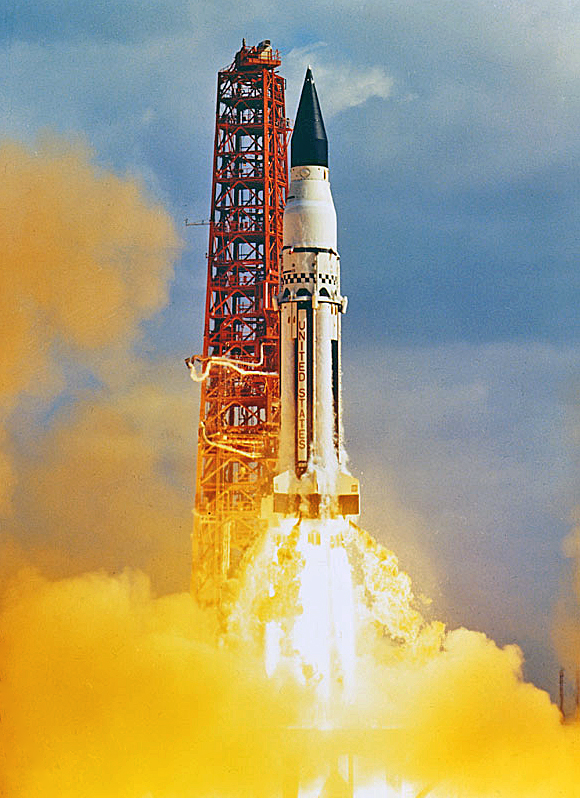
Fifty-four years ago this month, the United States successfully launched the first Saturn I Block II heavy-lift launch vehicle. Known as Saturn-Apollo No. 5 (SA-5), the space booster developmental mission featured the largest mass ever orbited up that time in the history of spaceflight.
The Saturn I vehicle was a pathfinder rocket booster that ultimately lead to the development of the mighty Saturn V launch vehicle. Ten (10) Saturn I boosters were flown between October 1961 and July 1965. The first four (4) missions involved the Block I variant wherein only the first stage was powered. The final six (6) missions employed Block II vehicles which included live first and second stages.
The powerful Saturn I measured 164 feet in length with a maximum diameter of 21.42 feet. The S-I first stage was powered by an octet of Rocketdyne H-1 engines that burned RP-1 and LOX and generated a total sea level thrust of 1,500,000 lbs. The new S-IV second-stage incorporated six (6) Pratt and Whitney RL10 engines rated at a total vacuum thrust of 900,000 lbs. The RL-10 rocket engines used liquid hydrogen and LOX as propellants.
SA-5 was launched from LC-37 at Cape Canaveral, Florida on Wednesday, 29 January 1964. Weighing 1,121,680 lbs at first stage ignition, the vehicle lifted-off at 14:25:01 UTC. As the first and second stages functioned in splendid fashion, the second stage successfully achieved an elliptical orbit measuring 142 nm x 415 nm.
The SA-5 orbited mass of 37,700 lbs was a record for the time. This payload, consisting of the S-IV stage, an instrument unit, and a modified Jupiter nose cone filled with sand ballast, remained in orbit through the end of April 1966.
The SA-5 mission was significant for a variety of reasons. It featured the first live S-IV rocket stage and was the first Saturn I vehicle to achieve orbit. It also marked that moment in spaceflight history when America finally surpassed the Soviet Union in payload mass to orbit capability. This bridging-the-gap event was an important and historic step in the race to the Moon in which America would be the ultimate victor.

